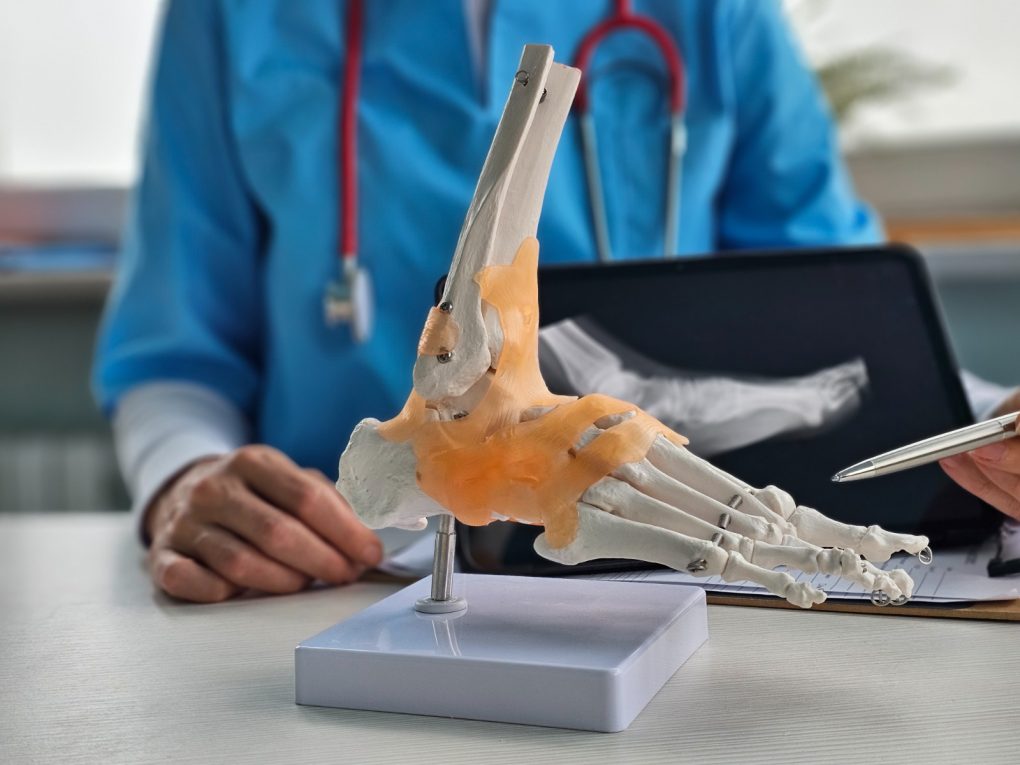Imagine waking up with a dull ache in your leg that doesn’t go away. You think it’s because of exercise, maybe arthritis, or just age catching up with you. Weeks pass, and the pain only gets worse. For some people, this is how the first signs of bone cancer appear.
Bone cancer is rare, but it can be life-changing if ignored. The good news? With modern medicine, awareness, and timely treatment, survival and quality of life have improved dramatically.
What is Bone Cancer?
Bone cancer is a type of cancer that starts in the bone cells. Unlike cancers that spread (metastasize) to the bone from other parts of the body. such as the breast, lungs, or prostate, true bone cancer originates in the bone itself.
Types of bone cancer-
- Osteosarcoma – the most common form, often found in teenagers and young adults.
- Chondrosarcoma – which develops in cartilage cells, usually in middle-aged or older adults.
- Ewing’s sarcoma – typically affecting children and adolescents.
- Bone marrow cancers – such as multiple myeloma, which begin in the soft tissue inside bones where blood cells are formed.
Bone Marrow Cancer Stages
Like other cancers, bone marrow cancers (such as multiple myeloma) are categorized into stages that help doctors determine how advanced the disease is and what treatment is best.
The bone marrow cancer stages are typically:
- Stage I (Early stage) – The cancer is confined, affecting only a small number of abnormal plasma cells in the bone marrow. Symptoms may be minimal or absent at this stage.
- Stage II (Intermediate stage) – The cancer begins to spread to other bones. Blood calcium and haemoglobin levels may change, and bone damage might start to appear.
- Stage III (Advanced stage) – Cancer is widespread in the bone marrow. Multiple areas of bone damage are present, and complications such as anemia, kidney problems, or high calcium levels are common.
Bone Cancer Symptoms
Some of the most common signs include:
- Bone pain – Persistent pain in the affected bone, which may worsen at night or during activity.
- Swelling and tenderness – The area around the tumor may become visibly swollen or tender to the touch.
- Fractures – Because cancer weakens the bone, even minor trauma can cause fractures.
- Fatigue and weight loss – General symptoms of many cancers, including bone cancer.
- Limited mobility – If the tumor is near a joint, it can cause stiffness and difficulty in movement.
Sometimes, bone cancer symptoms may resemble other conditions like arthritis or injuries, which is why many people ignore them initially. If the pain is persistent and unexplained, medical evaluation is essential.
Bone Cancer causes
The exact bone cancer causes are not fully understood, but certain risk factors include:
- Genetic mutations – Changes in DNA that disrupt normal cell growth can trigger bone cancer.
- Inherited conditions – Rare genetic syndromes such as Li-Fraumeni syndrome or hereditary retinoblastoma increase risk.
- Previous radiation therapy – People who have undergone radiation treatment for other cancers may face a higher risk later in life.
- Bone disorders – Conditions like Paget’s disease of the bone can predispose a person to cancer.
- Family history – A family history of bone or related cancers may play a role.
It is important to note that in many patients, no clear cause is found, which makes regular monitoring of unexplained bone pain and swelling even more important.
Bone Tumor Treatment Options
The major bone tumour treatment methods are:
1. Surgery
Surgery is one of the most common treatments for bone tumours. The goal is to remove the cancerous tissue completely. In some circumstances, limb-sparing surgery is an option. This means that only the part of the bone that is damaged is taken out and replaced with a prosthetic or bone graft. In more serious situations, amputation may be necessary, but this is less common now because to medical breakthroughs.
2. Chemotherapy
These are medications that kill cancer cells or keep them from developing. Chemotherapy works best for osteosarcoma and Ewing’s sarcoma.
3. Radiation Therapy
They focus high rays of energy on the tumor in an attempt to eradicate cells of cancer. With Ewing’s sarcoma and with other tumors which cannot be surgically excised, radiation therapy is usually the choice of treatment.
4. Targeted Therapy
This therapy concentrates on specific drugs and biochemical pathways which cancer cells exploit in their propensity to proliferate and invade. Concentrated drugs tend to be less toxic than conventional chemotherapy.
5. Immunotherapy
Unlike other treatment modalities, which focus on the tumors directly, emerging modalities like immunotherapy aim to empower the body’s existing mechanisms to recognize and destroy tumor cells.
Bone cancer precautions
- Eat a balanced diet containing plenty of fruits, vegetables, whole grains, lean proteins, and foods high in calcium and vitamin D, which all support bone strength.
- Have an active life, especially weight-bearing exercises like walking and strength training, to maintain bone density and overall health.
- Avoid smoking and limit alcohol use, as both can weaken bone tissue and make bones more vulnerable to disease.
- Minimize unnecessary radiation exposure, both in occupational and medical settings, since it can elevate bone cancer risk.
- Attend routine medical checkups to help catch any issues—including unexplained bone pain or swelling—early, which can improve outcomes if cancer develops.
- As soon as bone diseases like osteoporosis and Paget’s disease are diagnosed, the patient should adhere to the instructions given to control these conditions and help minimize the risks in the future.
- Always wear protective gear during activities that may cause bone injuries, as trauma can increase risk.
- People with family histories of cancer should discuss their risk factors with healthcare professionals, since genetics may play a role in some cases.
Combining these precautions with professional guidance provides the best strategy for maintaining bone health and lowering chances of bone cancer development.

